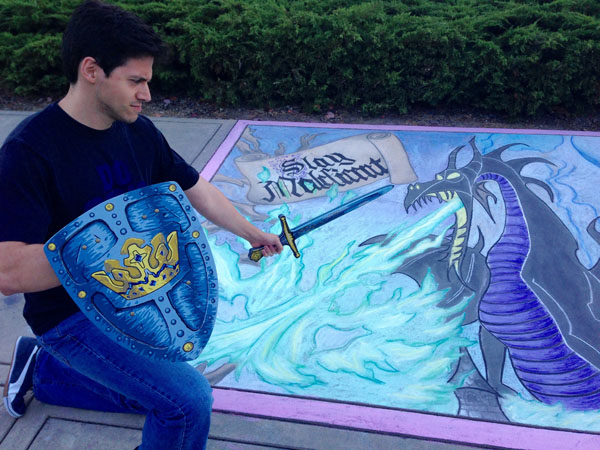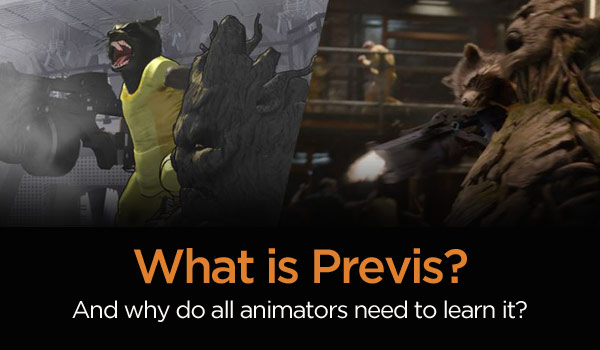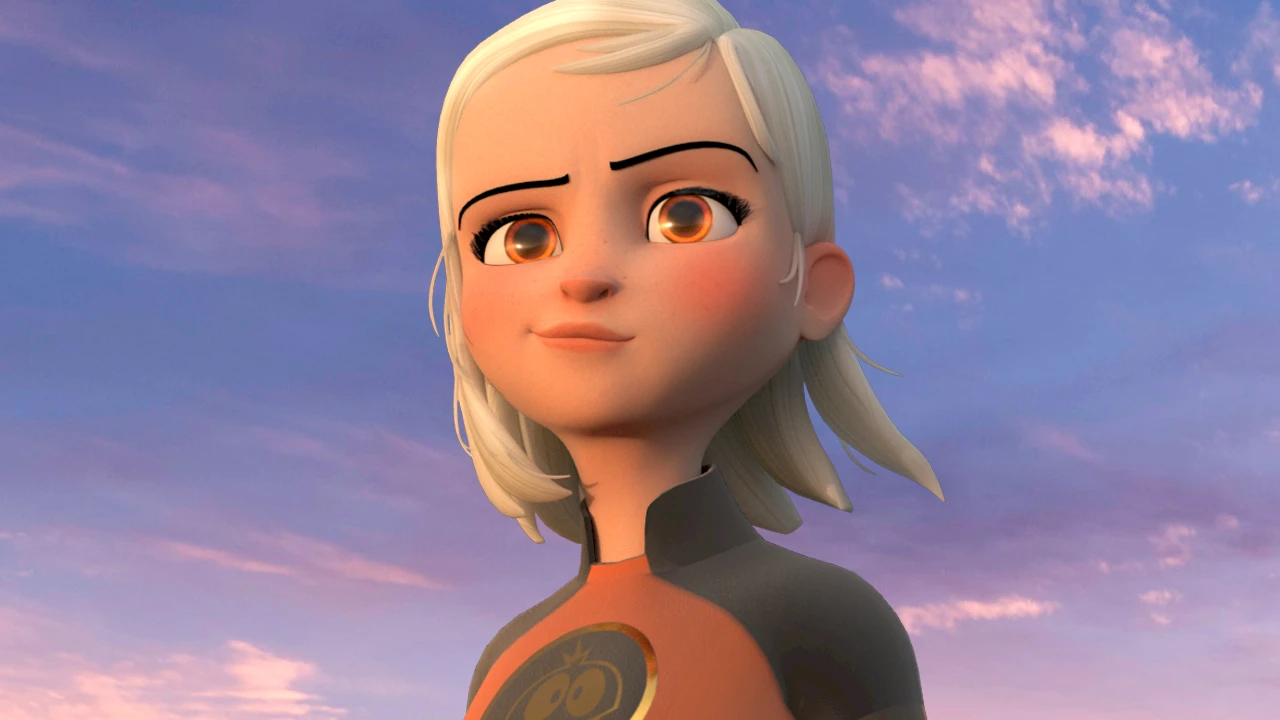To commemorate the launch of VFX Fundamentals, the Animation Mentor crew has interviewed studios big and small to learn of their impact in the visual effects world. You can read about their work in our new VFX Are Everywhere blog series. From the big screen, advertisements, corporate projects, amusement parks — and all places in between — you learn that visual effects truly are everywhere.
We kick off the series with VFX Curriculum Director, Ben Fischler, chatting with Shed Inc. in Montreal. Shed produces cutting-edge visual effects for films, corporate projects, and advertisements. Joining us are Shed’s Vice President and Visual Effects Supervisor, Sylvain Lebeau and Director of Animation, Pierre-Hugues “PH” Dallaire.
Enjoy the read and the series.
— The Animation Mentor Crew
Ben: Tell us about Shed.
Sylvain: Me and PH have known each other for 10 years. Before Shed, we had another company. Then we met others and realized that there was a mutual benefit. We starting working together to form Shed 8 years ago.
Pierre-Hugues: We are currently concentrating on advertisements for the past 5 years, with some effects for a movie. The film work is more an exception to the rule.
Sylvain: We don’t do much interactive stuff. But working with advertising agencies, they ask for animation for web and print. We also do corporate work.
Ben: When you think of your visual effects work that is seamless — when the audience doesn’t even know that it’s visual effects — what does that mean to you? What examples come to mind of VFX Are Everywhere? For example, your work with the client, Centraide commercial. To me, that doesn’t look like a visual effects piece. It looks like a beautiful film.
Pierre-Hugues: We work in the industry and we can spot the effects, if there are any. We did a campaign that involved placing angel wings behind some actors shot in live action. The goal was to make them look as realistic as possible. They had props strapped to their backs for tracking and matchmoving purposes, but you would never know since we erased them.
Sylvain: This was much different. People are used to costumes. If we stayed with people and costumes, we wouldn’t have the range of motion. we wouldn’t have gotten there.
Pierre-Hughes: We wouldn’t have gotten the same range of flexibility and control over actual wings that we managed to get in 3D.
Ben: The audience thinks they’re seeing something that they can readily identify with. For example, this is a prop wing and they’re comfortable with that and so they don’t bother, they accept it, and they buy into the story on screen. But the fact that it’s CG frees the storytelling up so much because you are not limited.
Pierre-Hugues: Exactly. if you’ve forgotten something or something needs to be fixed, CG is a good option to add objects or remove them.
Ben: We are teaching our students the importance of collaboration in the studio. That takes a few different forms. Teamwork within a studio means different things at each studio. As a smaller or mid-sized studio, how do you guys think of collaboration between artists in teams, or working with artists outside the studio?
Pierre-Hugues: We’re about 15 artists in our 3D department. Of those, we have about five animators. So we have an animation and rigging department; and a shading, lighting, and rendering department. And we split into two teams that work collaboratively, which means that after the modeling pipeline step, we can split the asset into two groups — where the model can be sent to rigging and to the texturing department at the same time, as long as the topology is the same so that the number of points on both models remains the same. The UVs carry through and that allows us to animate and prepare the final look at the same time.
Sylvain: We need this type of pipeline in the advertisement world because normally, schedules are pretty tight. So as soon as we start and the modeling goes out of the modeler’s hand, everybody works on the asset on both sides (rigging and texturing). Then we regroup all those assets into the shot and scene. We only import the position and adaptation of the render model — so everything splits up and (is then) brought back into the final shot and scene.
Also, the 3D department is an open space, and it’s pretty small, maybe 2,000 square feet. Shed is like a family, very tight. All the people (have known) each other for a long time now.
Ben: You are using Alembic to cache out animation data and that’s what the lighters work with?
Sylvain: Yes, but not for the hair simulation. We haven’t tested extensively yet. But this is something we’re going to look for — to create hair that is inter-related takes time and we would have to cache out all the hairs and not only the guides. (For the hair rendering) it’s all Arnold.
Ben: Is your pipeline built internally or are you using off-the-shelf products?
Sylvain: It’s all used inside of Shed. We’re also using Shotgun for organization. Our pipeline tools connect to Shotgun to be able to know which shot does what. And we do the same for NUKE as well. Everything is optimized, nobody needs to do any file open or menus. Everything is listed for every department and always with the latest scene selected for you. As soon as you want to work on something, you choose either asset or shot, and it lists everything for you that’s in the folder, so that’s very nice.
Ben: In our VFX curriculum, we are trying to build strong artists who have an understanding of how to get to a look or finished image across different skills. For example, you may want to go into compositing — but you need a knowledge of shading and geometry to make you a better artist. For Shed, there’s a certain amount of specialization. But within the look development process, do you let people takes things all the way from shader work through to final comp?
Sylvain: Artistically speaking, to have a good eye, you have be a photographer first — before all the technical stuff. When you’re used to taking photos, you’re able to emulate camera optics. And this is very important, to make things more real by lens distortion, things like that. As for shaders and look dev, we have a dedicated shading scene with 12 sIBL’s already — like “sunset 1” or “sunset 2”; “daylight” and “forest.” We place these in the scene and this is where the shaders come in. And as soon as you export a model from that scene, the model is ready to be imported into the render scene to be shot. As the show starts, at the animation and even the layout stage, we export the elements of every asset that we need for that shot. These are all in the still position, not moving, while the animators continue their work — and we can start lighting it at the exact same time. The lighting is evolving all the time until the animation is completed. Then we render the frames simply and comp it in NUKE. We keep working on the still until we are ready to render sequences.
Ben: It’s an eloquent process. For rendering, you use Arnold like we do in our classes. I’m curious, what lead you to Arnold and have you had situations where you weren’t able to get the results you wanted? Any Arnold pointers?
Sylvain: We started using Arnold maybe four years ago. It was still in its early stages — and we were only using it in testing. But it didn’t take long for us to see the potential with the speed increase and how interactive it is for the artist to place lights. The light is nice in Arnold. From there, we started buying other licenses and we totally jumped into production 100 percent. The only drawback early on was the ability to render volumetric stuff, like fire. Other than that, we didn’t have any problems that we weren’t able to work around. Arnold has a super-cool forum list that is awesome with a lot of talented, elite, advanced people who can help you out. By being there with them, we can solve any problem we have.
Ben: When rendering with Arnold, is your compositing workflow any different because of the Arnold processes? How much do you lean on the composite to get your final image? Are you still compositing? Or do you still use all the AOVs, etc.?
Sylvain: We render mostly beauty class, RGB matte pass. We call it puzzle here. And yes, we render all the AOVs to be able to control more in comp — and also to denoise the indirect diffuse and indirect specular channels. Sometimes, you get noise in there, so it’s good to minus it from the beauty pass. You de-noise it so that you can keep render times fairly usable and keep getting smooth images.
Ben: Do you render locally on a farm or do you do any cloud rendering?
Sylvain: We have our own render farm. It’s not super big. We have 25 good blades, 16 gb to 32 gb of RAM with 24 threads and they self-allot. The other blades are for NUKE. There’s a lot of work (involved) to be able to render on a cloud service. We have all of our add-on tools that we have to have — so it would be very hard to make that setup happen in the cloud. We have to place them here.
Ben: Our VFX students and our community want to know about the hiring process. If you’re hiring a VFX artist — for lighting, for example — what do you look for in your ideal candidate?
Sylvain: Since we’re small, we look for artists who know lighting, shading, and compositing. So the artist creates the passes, creates the look, and brings all the shots to the final stage. We render in Arnold and we comp in NUKE. We also have the Flame Suite and Smoke Suite here — we don’t use for comping, they’re more for client sessions where we put logos and erase a couple of things live with the client during an online session.
The most important thing is the attitude of the people. It’s nice when you have people who are passionate about what they do, you see that they are curious about technology, they practice a lot, and you feel that they want to become better and better all the time.
This is important to me. Everybody can learn tools from having people around them showing them little tricks here and there. And in a production environment, you learn very fast I would say. But yes, the attitude is a very important factor.
Ben: We try to emphasize that to our students — you can be a great artist, but you still need to work well with others. We teach them not to be too precious with their work. Yes, you should be passionate — but you still need to take the criticisms and notes and get your work done. That’s one of the hardest lessons for our students — to learn how to work with others.
Pierre-Hugues: When you’re a student, you work on your own shots and films — nobody tells you intentions, it’s all up to you. But when you are working on advertising or (outside) films, directors and clients have their vision and you need to be able to adjust.
Sylvain: Technical and artistic (skills) are important. But being a teammate helps a lot. It’s cool to have somebody come to your desk with suggestions. “Maybe you should consider adding light here, a shade of blue on this shot.” You need to be open minded to even try it.




